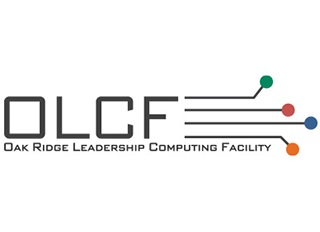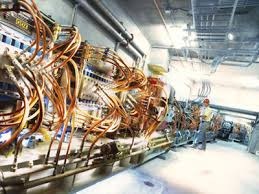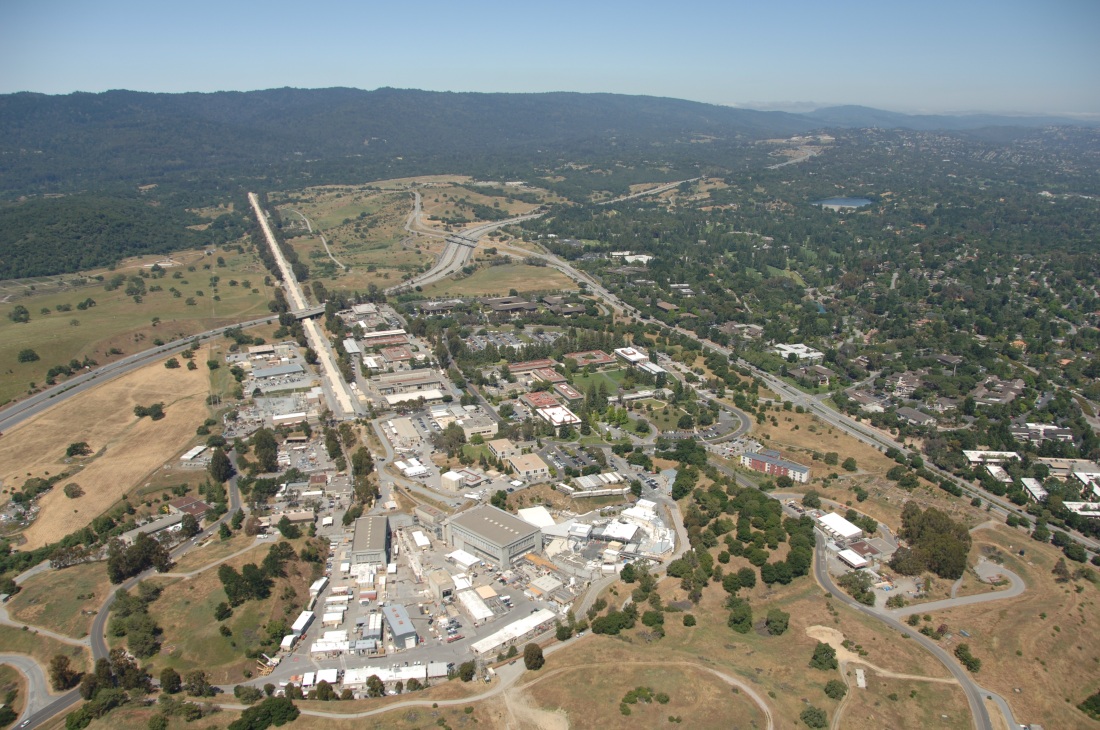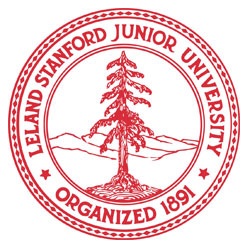From DOE’s SLAC National Accelerator Laboratory (US)
September 15, 2021
Glennda Chui
Much like crystallizing rock candy from sugar syrup, the new method grows 2D perovskites precisely layered with other 2D materials to produce crystals with a wide range of electronic properties.
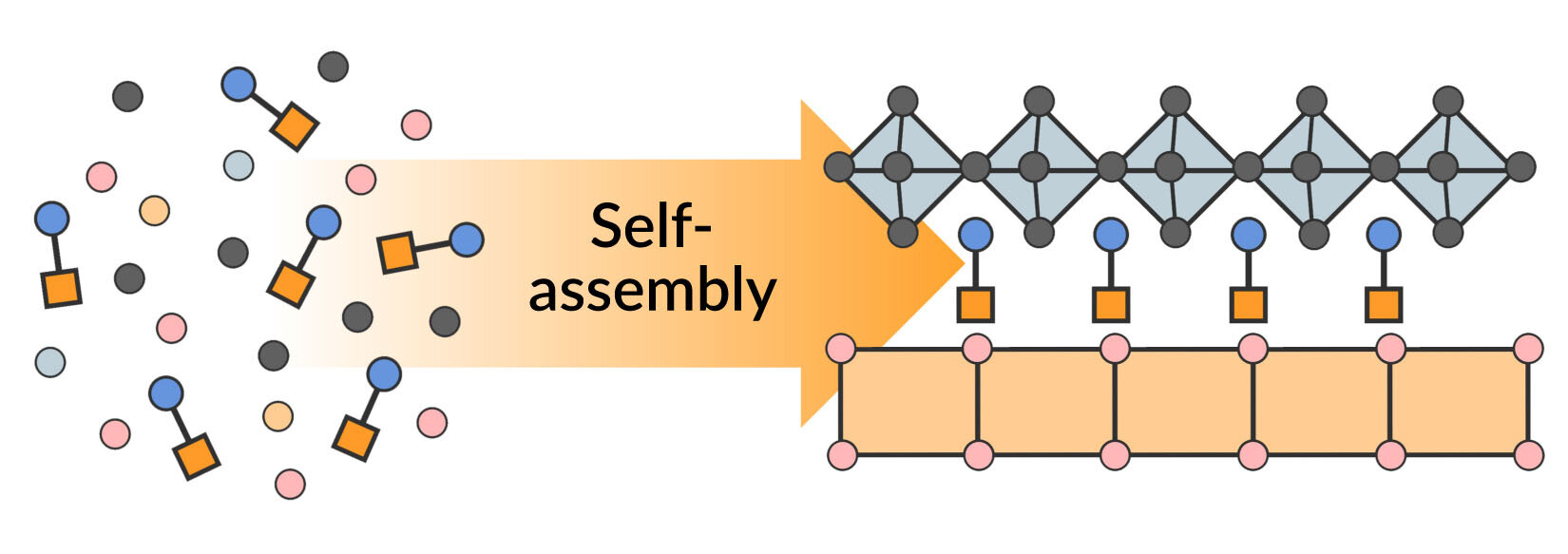
A diagram shows how layers of two 2D materials – a perovskite (blue) and a metal halide (yellow) – assemble themselves out of chemicals tumbling around in water (left). The assembly is directed by linker molecules that look like barbells. Each end of a barbell (blue or yellow) carries a chemical template for growing one of the layers, and as the layers grow, the barbells link them together in the correct order. The new self-assembly technique, developed by SLAC and Stanford researchers, produces large crystals with a wide range of electronic properties. Credit: Jiayi Li/Stanford University (US).
Stacking extremely thin films of material on top of each other can create new materials with exciting new properties. But the most successful processes for building those stacks can be tedious and imperfect, and not well suited for large-scale production.
Now a team led by Stanford Professor Hemamala Karunadasa has created a much simpler and faster way to do it. They grew 2D layers of one of the most sought-after materials, known as perovskites, interleaved with thin layers of other materials in large crystals that assemble themselves.
The assembly takes place in vials where the chemical ingredients for the layers tumble around in water, along with barbell-shaped molecules that direct the action. Each end of a barbell carries a template for growing one type of layer. As the layers crystallize – a process similar to making rock candy — the barbells automatically link them together in the proper order.
“What’s really cool is that these complex layered materials spontaneously crystallize,” said Michael Aubrey, who was a postdoctoral researcher in Karunadasa’s lab at the time of the study.
The researchers say their method lays the foundation for making a wide array of complex semiconductors in a much more deliberate way, including combinations of materials that have not been known to pair up in crystals before. They described the work in a paper published in Nature today.
“We are pretty thrilled about this general strategy that can be expanded to so many kinds of materials,” said Karunadasa, who is an investigator with the Stanford Institute for Materials and Energy Sciences (SIMES) at the Department of Energy’s SLAC National Accelerator Laboratory.
“Rather than manipulating materials one layer at time,” she said, “we’re just throwing the ions into a pot of water and letting the ions assemble the way they want to assemble. We can make grams of this stuff, and we know where the atoms are in the crystals. This level of precision allows me to know what the interfaces between the layers really look like, which is important for determining the material’s electronic structure – how its electrons behave”
Easy to make, hard to stack
Halide perovskites – materials that have the same octahedral structure as naturally occurring perovskite minereals – have been assembled in water since the 1900s, Aubrey said. They have a lot of potential for efficiently absorbing sunlight in solar cells and converting it to electricity, but they’re also notoriously unstable, especially in the hot, brilliantly lit environments that photovoltaics operate in.
Layering perovskites with other materials could combine their properties in ways that improve their performance in specific applications. But an even more exciting prospect is that entirely new and unexpected properties could emerge at the interfaces where layers meet; for instance, scientists have previously discovered that stacking thin films of two different types of insulators can create an electrical conductor.
It’s hard to predict which combinations of materials will turn out to be interesting and useful. What’s more, making thinly layered materials has been a slow, painstaking process. Layers are generally made by peeling films just one or two atoms thick, one at a time, from a bigger chunk of material. That’s how graphene is made from graphite, a pure form of carbon used in pencil leads. In other cases, these thinly layered materials are made in tiny batches at very high temperatures.
“The way they’re made has not been scalable and sometimes even difficult to reproduce from one batch to another,” Karunadasa said. “Peeling off layers that are just one or two atoms thick is specialized work; it is not something you and I can just go into the lab and do. These sheets are like a very flexible deck of cards; when you take one out, it can crumple or buckle. So it is hard to know the exact structure of the final stack. There is very little precedent for materials that look like the ones we created in this study.”

This animation shows how a 2D layer of material that’s being interwoven with a 2D perovskite (which is not shown) has to distort slightly to form a tight interface with the perovskite’s atomic lattice. Both types of layers assemble themselves from chemicals in water with the help of molecules shaped like barbells. These barbells carry templates that direct the assembly and link the finished layers in the correct order. The new self-assembly technique, developed by SLAC and Stanford researchers, produces large crystals with a wide range of electronic properties. (Michael Aubrey/Stanford University.)
Rock candy synthesis
This work grew out of research by study co-author Abraham Saldivar Valdes, a graduate student in Karunadasa’s group at the time. Over the course of several years, he developed the new method for getting the layered structures to assemble themselves, which was further expanded by graduate student Bridget Connor. Meanwhile, Aubrey discovered that their atomically thin layers had the same structure as 3D blocks of similar materials whose properties were already known, and he tracked how the two different layers have to slightly distort to share an interface. He also studied the optical properties of the final products with the help of graduate student Kurt Lindquist.
Creating the layered structures “is the same exact process as making rock candy, where you drop a wooden dowel into saturated sugar solution and the candy crystals seed themselves onto the dowel,” Aubrey said. “But in this case the starting materials are different and you don’t need a dowel – crystals will start forming in water or on the surface of the glass vial.”
The team made six of the self-assembled materials, interleaving perovskites with metal halides or metal sulfides, and examined them with X-rays at the Advanced Light Source at DOE’s Lawrence Berkeley National Laboratory (US).

In most of the structures, the barbell molecules held the layers slightly apart. But in one of them the barbell molecules brought the layers directly into contact with each other so they could form chemical bonds.

The way 2D layers are linked in self-assembled crystals can have a big impact on their electronic structure, which determines their properties. In the material at top left, the links hold the layers slightly apart (see inset). When this material is hit with light to free electrons and create positively charged holes (in orange at top right), both concentrate in the perovskite layers. In contrast, the links in the material at bottom left (see inset) hold the layers so closely together that they can form direct chemical bonds. When this material is hit with light (bottom right), electrons stay mostly in one type of layer and holes in the other. Such emergent properties are a particularly exciting consequence of interfaces between two different types of structures. (Michael Aubrey/Stanford University.)
“We are particularly excited about this type of structure where the layers are connected because it could lead to emergent properties, like electronic excitations that are distributed across both layers,” Karunadasa said.
“And in this particular case, when we hit the material with light to free electrons and create positively charged holes, we found the electrons mostly in one type of layer and the holes mostly in the other. This is important in our field, because it allows you to tune those two environments to get the electronic behavior you want.”
With the new technique in hand, Aubrey said, “We’re doing a lot of exploration now to discover what kinds of structures can be made with it.”
Marina Filip and Jeffrey Neaton from The University of California-Berkeley (US) and DOE’s Lawrence Berkeley National Laboratory (US) performed the electronic structure calculations in this work. This research was funded by the DOE Office of Science. ALS is an Office of Science user facility, as are two other facilities where computing was done for this research: the National Energy Research Scientific Computing Center (NERSC) and the Oak Ridge Leadership Computing Facility.
See the full article here .

five-ways-keep-your-child-safe-school-shootings
Please help promote STEM in your local schools.
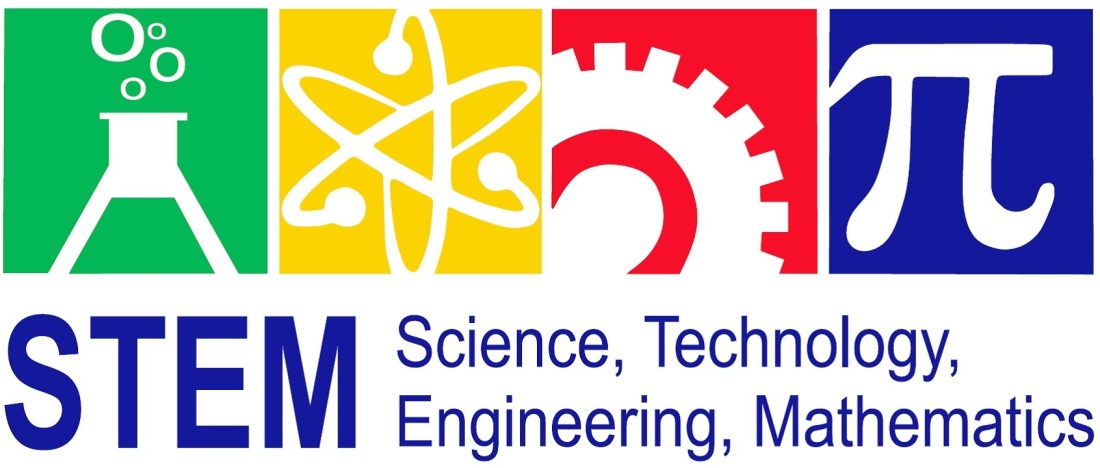
Stem Education Coalition
SLAC National Accelerator Laboratory (US) originally named Stanford Linear Accelerator Center, is a Department of Energy (US) National Laboratory operated by Stanford University (US) under the programmatic direction of the Department of Energy (US) Office of Science and located in Menlo Park, California. It is the site of the Stanford Linear Accelerator, a 3.2 kilometer (2-mile) linear accelerator constructed in 1966 and shut down in the 2000s, which could accelerate electrons to energies of 50 GeV.
Today SLAC research centers on a broad program in atomic and solid-state physics, chemistry, biology, and medicine using X-rays from synchrotron radiation and a free-electron laser as well as experimental and theoretical research in elementary particle physics, astroparticle physics, and cosmology.
Founded in 1962 as the Stanford Linear Accelerator Center, the facility is located on 172 hectares (426 acres) of Stanford University-owned land on Sand Hill Road in Menlo Park, California—just west of the University’s main campus. The main accelerator is 3.2 kilometers (2 mi) long—the longest linear accelerator in the world—and has been operational since 1966.
Research at SLAC has produced three Nobel Prizes in Physics
1976: The charm quark—see J/ψ meson
1990: Quark structure inside protons and neutrons
1995: The tau lepton
SLAC’s meeting facilities also provided a venue for the Homebrew Computer Club and other pioneers of the home computer revolution of the late 1970s and early 1980s.
In 1984 the laboratory was named an ASME National Historic Engineering Landmark and an IEEE Milestone.
SLAC developed and, in December 1991, began hosting the first World Wide Web server outside of Europe.
In the early-to-mid 1990s, the Stanford Linear Collider (SLC) investigated the properties of the Z boson using the Stanford Large Detector.
As of 2005, SLAC employed over 1,000 people, some 150 of whom were physicists with doctorate degrees, and served over 3,000 visiting researchers yearly, operating particle accelerators for high-energy physics and the Stanford Synchrotron Radiation Laboratory (SSRL) [below] for synchrotron light radiation research, which was “indispensable” in the research leading to the 2006 Nobel Prize in Chemistry awarded to Stanford Professor Roger D. Kornberg.
In October 2008, the Department of Energy announced that the center’s name would be changed to SLAC National Accelerator Laboratory. The reasons given include a better representation of the new direction of the lab and the ability to trademark the laboratory’s name. Stanford University had legally opposed the Department of Energy’s attempt to trademark “Stanford Linear Accelerator Center”.
In March 2009, it was announced that the SLAC National Accelerator Laboratory was to receive $68.3 million in Recovery Act Funding to be disbursed by Department of Energy’s Office of Science.
In October 2016, Bits and Watts launched as a collaboration between SLAC and Stanford University to design “better, greener electric grids”. SLAC later pulled out over concerns about an industry partner, the state-owned Chinese electric utility.
Accelerator
The main accelerator was an RF linear accelerator that accelerated electrons and positrons up to 50 GeV. At 3.2 km (2.0 mi) long, the accelerator was the longest linear accelerator in the world, and was claimed to be “the world’s most straight object.” until 2017 when the European x-ray free electron laser opened. The main accelerator is buried 9 m (30 ft) below ground and passes underneath Interstate Highway 280. The above-ground klystron gallery atop the beamline, was the longest building in the United States until the LIGO project’s twin interferometers were completed in 1999. It is easily distinguishable from the air and is marked as a visual waypoint on aeronautical charts.
A portion of the original linear accelerator is now part of the Linac Coherent Light Source [below].
Stanford Linear Collider
The Stanford Linear Collider was a linear accelerator that collided electrons and positrons at SLAC. The center of mass energy was about 90 GeV, equal to the mass of the Z boson, which the accelerator was designed to study. Grad student Barrett D. Milliken discovered the first Z event on 12 April 1989 while poring over the previous day’s computer data from the Mark II detector. The bulk of the data was collected by the SLAC Large Detector, which came online in 1991. Although largely overshadowed by the Large Electron–Positron Collider at CERN, which began running in 1989, the highly polarized electron beam at SLC (close to 80%) made certain unique measurements possible, such as parity violation in Z Boson-b quark coupling.
 European Organization for Nuclear Research [Organisation européenne pour la recherche nucléaire](CH) LEP Collider
European Organization for Nuclear Research [Organisation européenne pour la recherche nucléaire](CH) LEP Collider
Presently no beam enters the south and north arcs in the machine, which leads to the Final Focus, therefore this section is mothballed to run beam into the PEP2 section from the beam switchyard.
The SLAC Large Detector (SLD) was the main detector for the Stanford Linear Collider. It was designed primarily to detect Z bosons produced by the accelerator’s electron-positron collisions. Built in 1991, the SLD operated from 1992 to 1998.

PEP
PEP (Positron-Electron Project) began operation in 1980, with center-of-mass energies up to 29 GeV. At its apex, PEP had five large particle detectors in operation, as well as a sixth smaller detector. About 300 researchers made used of PEP. PEP stopped operating in 1990, and PEP-II began construction in 1994.
PEP-II
From 1999 to 2008, the main purpose of the linear accelerator was to inject electrons and positrons into the PEP-II accelerator, an electron-positron collider with a pair of storage rings 2.2 km (1.4 mi) in circumference. PEP-II was host to the BaBar experiment, one of the so-called B-Factory experiments studying charge-parity symmetry.
Fermi Gamma-ray Space Telescope
SLAC plays a primary role in the mission and operation of the Fermi Gamma-ray Space Telescope, launched in August 2008. The principal scientific objectives of this mission are:
To understand the mechanisms of particle acceleration in AGNs, pulsars, and SNRs.
To resolve the gamma-ray sky: unidentified sources and diffuse emission.
To determine the high-energy behavior of gamma-ray bursts and transients.
To probe dark matter and fundamental physics.

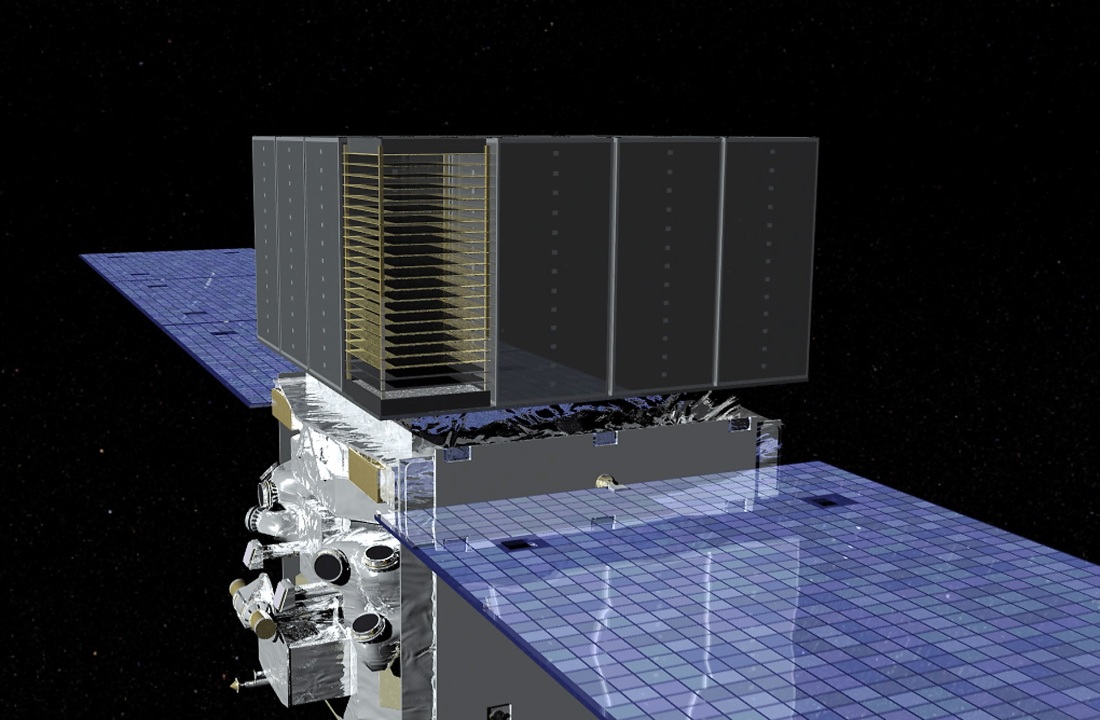 National Aeronautics and Space Administration(US)/Fermi Gamma Ray Space Telescope.
National Aeronautics and Space Administration(US)/Fermi Gamma Ray Space Telescope.
KIPAC

The Stanford PULSE Institute (PULSE) is a Stanford Independent Laboratory located in the Central Laboratory at SLAC. PULSE was created by Stanford in 2005 to help Stanford faculty and SLAC scientists develop ultrafast x-ray research at LCLS.
The Linac Coherent Light Source (LCLS)[below] is a free electron laser facility located at SLAC. The LCLS is partially a reconstruction of the last 1/3 of the original linear accelerator at SLAC, and can deliver extremely intense x-ray radiation for research in a number of areas. It achieved first lasing in April 2009.
The laser produces hard X-rays, 10^9 times the relative brightness of traditional synchrotron sources and is the most powerful x-ray source in the world. LCLS enables a variety of new experiments and provides enhancements for existing experimental methods. Often, x-rays are used to take “snapshots” of objects at the atomic level before obliterating samples. The laser’s wavelength, ranging from 6.2 to 0.13 nm (200 to 9500 electron volts (eV)) is similar to the width of an atom, providing extremely detailed information that was previously unattainable. Additionally, the laser is capable of capturing images with a “shutter speed” measured in femtoseconds, or million-billionths of a second, necessary because the intensity of the beam is often high enough so that the sample explodes on the femtosecond timescale.
The LCLS-II [below] project is to provide a major upgrade to LCLS by adding two new X-ray laser beams. The new system will utilize the 500 m (1,600 ft) of existing tunnel to add a new superconducting accelerator at 4 GeV and two new sets of undulators that will increase the available energy range of LCLS. The advancement from the discoveries using this new capabilities may include new drugs, next-generation computers, and new materials.
FACET
In 2012, the first two-thirds (~2 km) of the original SLAC LINAC were recommissioned for a new user facility, the Facility for Advanced Accelerator Experimental Tests (FACET). This facility was capable of delivering 20 GeV, 3 nC electron (and positron) beams with short bunch lengths and small spot sizes, ideal for beam-driven plasma acceleration studies. The facility ended operations in 2016 for the constructions of LCLS-II which will occupy the first third of the SLAC LINAC. The FACET-II project will re-establish electron and positron beams in the middle third of the LINAC for the continuation of beam-driven plasma acceleration studies in 2019.


The Next Linear Collider Test Accelerator (NLCTA) is a 60-120 MeV high-brightness electron beam linear accelerator used for experiments on advanced beam manipulation and acceleration techniques. It is located at SLAC’s end station B.



 Magnets called undulators stretch roughly 100 meters down a tunnel at SLAC National Accelerator Laboratory, with one side (right) producing hard x-rays and the other soft x-rays.Credit: SLAC National Accelerator Laboratory.
Magnets called undulators stretch roughly 100 meters down a tunnel at SLAC National Accelerator Laboratory, with one side (right) producing hard x-rays and the other soft x-rays.Credit: SLAC National Accelerator Laboratory.
SSRL and LCLS are DOE Office of Science user facilities.


Leland and Jane Stanford founded the University to “promote the public welfare by exercising an influence on behalf of humanity and civilization.” Stanford opened its doors in 1891, and more than a century later, it remains dedicated to finding solutions to the great challenges of the day and to preparing our students for leadership in today’s complex world. Stanford, is an American private research university located in Stanford, California on an 8,180-acre (3,310 ha) campus near Palo Alto. Since 1952, more than 54 Stanford faculty, staff, and alumni have won the Nobel Prize, including 19 current faculty members.
Stanford University, officially Leland Stanford Junior University, is a private research university located in Stanford, California. Stanford was founded in 1885 by Leland and Jane Stanford in memory of their only child, Leland Stanford Jr., who had died of typhoid fever at age 15 the previous year. Stanford is consistently ranked as among the most prestigious and top universities in the world by major education publications. It is also one of the top fundraising institutions in the country, becoming the first school to raise more than a billion dollars in a year.
Leland Stanford was a U.S. senator and former governor of California who made his fortune as a railroad tycoon. The school admitted its first students on October 1, 1891, as a coeducational and non-denominational institution. Stanford University struggled financially after the death of Leland Stanford in 1893 and again after much of the campus was damaged by the 1906 San Francisco earthquake. Following World War II, provost Frederick Terman supported faculty and graduates’ entrepreneurialism to build self-sufficient local industry in what would later be known as Silicon Valley.
The university is organized around seven schools: three schools consisting of 40 academic departments at the undergraduate level as well as four professional schools that focus on graduate programs in law, medicine, education, and business. All schools are on the same campus. Students compete in 36 varsity sports, and the university is one of two private institutions in the Division I FBS Pac-12 Conference. It has gained 126 NCAA team championships, and Stanford has won the NACDA Directors’ Cup for 24 consecutive years, beginning in 1994–1995. In addition, Stanford students and alumni have won 270 Olympic medals including 139 gold medals.
As of October 2020, 84 Nobel laureates, 28 Turing Award laureates, and eight Fields Medalists have been affiliated with Stanford as students, alumni, faculty, or staff. In addition, Stanford is particularly noted for its entrepreneurship and is one of the most successful universities in attracting funding for start-ups. Stanford alumni have founded numerous companies, which combined produce more than $2.7 trillion in annual revenue, roughly equivalent to the 7th largest economy in the world (as of 2020). Stanford is the alma mater of one president of the United States (Herbert Hoover), 74 living billionaires, and 17 astronauts. It is also one of the leading producers of Fulbright Scholars, Marshall Scholars, Rhodes Scholars, and members of the United States Congress.
Stanford University was founded in 1885 by Leland and Jane Stanford, dedicated to Leland Stanford Jr, their only child. The institution opened in 1891 on Stanford’s previous Palo Alto farm.
Jane and Leland Stanford modeled their university after the great eastern universities, most specifically Cornell University. Stanford opened being called the “Cornell of the West” in 1891 due to faculty being former Cornell affiliates (either professors, alumni, or both) including its first president, David Starr Jordan, and second president, John Casper Branner. Both Cornell and Stanford were among the first to have higher education be accessible, nonsectarian, and open to women as well as to men. Cornell is credited as one of the first American universities to adopt this radical departure from traditional education, and Stanford became an early adopter as well.
Despite being impacted by earthquakes in both 1906 and 1989, the campus was rebuilt each time. In 1919, The Hoover Institution on War, Revolution and Peace was started by Herbert Hoover to preserve artifacts related to World War I. The Stanford Medical Center, completed in 1959, is a teaching hospital with over 800 beds. The DOE’s SLAC National Accelerator Laboratory(US)(originally named the Stanford Linear Accelerator Center), established in 1962, performs research in particle physics.
Land
Most of Stanford is on an 8,180-acre (12.8 sq mi; 33.1 km^2) campus, one of the largest in the United States. It is located on the San Francisco Peninsula, in the northwest part of the Santa Clara Valley (Silicon Valley) approximately 37 miles (60 km) southeast of San Francisco and approximately 20 miles (30 km) northwest of San Jose. In 2008, 60% of this land remained undeveloped.
Stanford’s main campus includes a census-designated place within unincorporated Santa Clara County, although some of the university land (such as the Stanford Shopping Center and the Stanford Research Park) is within the city limits of Palo Alto. The campus also includes much land in unincorporated San Mateo County (including the SLAC National Accelerator Laboratory and the Jasper Ridge Biological Preserve), as well as in the city limits of Menlo Park (Stanford Hills neighborhood), Woodside, and Portola Valley.
Non-central campus
Stanford currently operates in various locations outside of its central campus.
On the founding grant:
Jasper Ridge Biological Preserve is a 1,200-acre (490 ha) natural reserve south of the central campus owned by the university and used by wildlife biologists for research.
SLAC National Accelerator Laboratory is a facility west of the central campus operated by the university for the Department of Energy. It contains the longest linear particle accelerator in the world, 2 miles (3.2 km) on 426 acres (172 ha) of land.
Golf course and a seasonal lake: The university also has its own golf course and a seasonal lake (Lake Lagunita, actually an irrigation reservoir), both home to the vulnerable California tiger salamander. As of 2012 Lake Lagunita was often dry and the university had no plans to artificially fill it.
Off the founding grant:
Hopkins Marine Station, in Pacific Grove, California, is a marine biology research center owned by the university since 1892.
Study abroad locations: unlike typical study abroad programs, Stanford itself operates in several locations around the world; thus, each location has Stanford faculty-in-residence and staff in addition to students, creating a “mini-Stanford”.
Redwood City campus for many of the university’s administrative offices located in Redwood City, California, a few miles north of the main campus. In 2005, the university purchased a small, 35-acre (14 ha) campus in Midpoint Technology Park intended for staff offices; development was delayed by The Great Recession. In 2015 the university announced a development plan and the Redwood City campus opened in March 2019.
The Bass Center in Washington, DC provides a base, including housing, for the Stanford in Washington program for undergraduates. It includes a small art gallery open to the public.
China: Stanford Center at Peking University, housed in the Lee Jung Sen Building, is a small center for researchers and students in collaboration with Beijing University [北京大学](CN) (Kavli Institute for Astronomy and Astrophysics at Peking University(CN) (KIAA-PKU).
Administration and organization
Stanford is a private, non-profit university that is administered as a corporate trust governed by a privately appointed board of trustees with a maximum membership of 38. Trustees serve five-year terms (not more than two consecutive terms) and meet five times annually.[83] A new trustee is chosen by the current trustees by ballot. The Stanford trustees also oversee the Stanford Research Park, the Stanford Shopping Center, the Cantor Center for Visual Arts, Stanford University Medical Center, and many associated medical facilities (including the Lucile Packard Children’s Hospital).
The board appoints a president to serve as the chief executive officer of the university, to prescribe the duties of professors and course of study, to manage financial and business affairs, and to appoint nine vice presidents. The provost is the chief academic and budget officer, to whom the deans of each of the seven schools report. Persis Drell became the 13th provost in February 2017.
As of 2018, the university was organized into seven academic schools. The schools of Humanities and Sciences (27 departments), Engineering (nine departments), and Earth, Energy & Environmental Sciences (four departments) have both graduate and undergraduate programs while the Schools of Law, Medicine, Education and Business have graduate programs only. The powers and authority of the faculty are vested in the Academic Council, which is made up of tenure and non-tenure line faculty, research faculty, senior fellows in some policy centers and institutes, the president of the university, and some other academic administrators, but most matters are handled by the Faculty Senate, made up of 55 elected representatives of the faculty.
The Associated Students of Stanford University (ASSU) is the student government for Stanford and all registered students are members. Its elected leadership consists of the Undergraduate Senate elected by the undergraduate students, the Graduate Student Council elected by the graduate students, and the President and Vice President elected as a ticket by the entire student body.
Stanford is the beneficiary of a special clause in the California Constitution, which explicitly exempts Stanford property from taxation so long as the property is used for educational purposes.
Endowment and donations
The university’s endowment, managed by the Stanford Management Company, was valued at $27.7 billion as of August 31, 2019. Payouts from the Stanford endowment covered approximately 21.8% of university expenses in the 2019 fiscal year. In the 2018 NACUBO-TIAA survey of colleges and universities in the United States and Canada, only Harvard University(US), the University of Texas System(US), and Yale University(US) had larger endowments than Stanford.
In 2006, President John L. Hennessy launched a five-year campaign called the Stanford Challenge, which reached its $4.3 billion fundraising goal in 2009, two years ahead of time, but continued fundraising for the duration of the campaign. It concluded on December 31, 2011, having raised a total of $6.23 billion and breaking the previous campaign fundraising record of $3.88 billion held by Yale. Specifically, the campaign raised $253.7 million for undergraduate financial aid, as well as $2.33 billion for its initiative in “Seeking Solutions” to global problems, $1.61 billion for “Educating Leaders” by improving K-12 education, and $2.11 billion for “Foundation of Excellence” aimed at providing academic support for Stanford students and faculty. Funds supported 366 new fellowships for graduate students, 139 new endowed chairs for faculty, and 38 new or renovated buildings. The new funding also enabled the construction of a facility for stem cell research; a new campus for the business school; an expansion of the law school; a new Engineering Quad; a new art and art history building; an on-campus concert hall; a new art museum; and a planned expansion of the medical school, among other things. In 2012, the university raised $1.035 billion, becoming the first school to raise more than a billion dollars in a year.
Research centers and institutes
DOE’s SLAC National Accelerator Laboratory(US)
Stanford Research Institute, a center of innovation to support economic development in the region.
Hoover Institution, a conservative American public policy institution and research institution that promotes personal and economic liberty, free enterprise, and limited government.
Hasso Plattner Institute of Design, a multidisciplinary design school in cooperation with the Hasso Plattner Institute of University of Potsdam [Universität Potsdam](DE) that integrates product design, engineering, and business management education).
Martin Luther King Jr. Research and Education Institute, which grew out of and still contains the Martin Luther King Jr. Papers Project.
John S. Knight Fellowship for Professional Journalists
Center for Ocean Solutions
Together with UC Berkeley(US) and UC San Francisco(US), Stanford is part of the Biohub, a new medical science research center founded in 2016 by a $600 million commitment from Facebook CEO and founder Mark Zuckerberg and pediatrician Priscilla Chan.
Discoveries and innovation
Natural sciences
Biological synthesis of deoxyribonucleic acid (DNA) – Arthur Kornberg synthesized DNA material and won the Nobel Prize in Physiology or Medicine 1959 for his work at Stanford.
First Transgenic organism – Stanley Cohen and Herbert Boyer were the first scientists to transplant genes from one living organism to another, a fundamental discovery for genetic engineering. Thousands of products have been developed on the basis of their work, including human growth hormone and hepatitis B vaccine.
Laser – Arthur Leonard Schawlow shared the 1981 Nobel Prize in Physics with Nicolaas Bloembergen and Kai Siegbahn for his work on lasers.
Nuclear magnetic resonance – Felix Bloch developed new methods for nuclear magnetic precision measurements, which are the underlying principles of the MRI.
Computer and applied sciences
ARPANET – Stanford Research Institute, formerly part of Stanford but on a separate campus, was the site of one of the four original ARPANET nodes.
Internet—Stanford was the site where the original design of the Internet was undertaken. Vint Cerf led a research group to elaborate the design of the Transmission Control Protocol (TCP/IP) that he originally co-created with Robert E. Kahn (Bob Kahn) in 1973 and which formed the basis for the architecture of the Internet.
Frequency modulation synthesis – John Chowning of the Music department invented the FM music synthesis algorithm in 1967, and Stanford later licensed it to Yamaha Corporation.
Google – Google began in January 1996 as a research project by Larry Page and Sergey Brin when they were both PhD students at Stanford. They were working on the Stanford Digital Library Project (SDLP). The SDLP’s goal was “to develop the enabling technologies for a single, integrated and universal digital library” and it was funded through the National Science Foundation, among other federal agencies.
Klystron tube – invented by the brothers Russell and Sigurd Varian at Stanford. Their prototype was completed and demonstrated successfully on August 30, 1937. Upon publication in 1939, news of the klystron immediately influenced the work of U.S. and UK researchers working on radar equipment.
RISC – ARPA funded VLSI project of microprocessor design. Stanford and UC Berkeley are most associated with the popularization of this concept. The Stanford MIPS would go on to be commercialized as the successful MIPS architecture, while Berkeley RISC gave its name to the entire concept, commercialized as the SPARC. Another success from this era were IBM’s efforts that eventually led to the IBM POWER instruction set architecture, PowerPC, and Power ISA. As these projects matured, a wide variety of similar designs flourished in the late 1980s and especially the early 1990s, representing a major force in the Unix workstation market as well as embedded processors in laser printers, routers and similar products.
SUN workstation – Andy Bechtolsheim designed the SUN workstation for the Stanford University Network communications project as a personal CAD workstation, which led to Sun Microsystems.
Businesses and entrepreneurship
Stanford is one of the most successful universities in creating companies and licensing its inventions to existing companies; it is often held up as a model for technology transfer. Stanford’s Office of Technology Licensing is responsible for commercializing university research, intellectual property, and university-developed projects.
The university is described as having a strong venture culture in which students are encouraged, and often funded, to launch their own companies.
Companies founded by Stanford alumni generate more than $2.7 trillion in annual revenue, equivalent to the 10th-largest economy in the world.
Some companies closely associated with Stanford and their connections include:
Hewlett-Packard, 1939, co-founders William R. Hewlett (B.S, PhD) and David Packard (M.S).
Silicon Graphics, 1981, co-founders James H. Clark (Associate Professor) and several of his grad students.
Sun Microsystems, 1982, co-founders Vinod Khosla (M.B.A), Andy Bechtolsheim (PhD) and Scott McNealy (M.B.A).
Cisco, 1984, founders Leonard Bosack (M.S) and Sandy Lerner (M.S) who were in charge of Stanford Computer Science and Graduate School of Business computer operations groups respectively when the hardware was developed.[163]
Yahoo!, 1994, co-founders Jerry Yang (B.S, M.S) and David Filo (M.S).
Google, 1998, co-founders Larry Page (M.S) and Sergey Brin (M.S).
LinkedIn, 2002, co-founders Reid Hoffman (B.S), Konstantin Guericke (B.S, M.S), Eric Lee (B.S), and Alan Liu (B.S).
Instagram, 2010, co-founders Kevin Systrom (B.S) and Mike Krieger (B.S).
Snapchat, 2011, co-founders Evan Spiegel and Bobby Murphy (B.S).
Coursera, 2012, co-founders Andrew Ng (Associate Professor) and Daphne Koller (Professor, PhD).
Student body
Stanford enrolled 6,996 undergraduate and 10,253 graduate students as of the 2019–2020 school year. Women comprised 50.4% of undergraduates and 41.5% of graduate students. In the same academic year, the freshman retention rate was 99%.
Stanford awarded 1,819 undergraduate degrees, 2,393 master’s degrees, 770 doctoral degrees, and 3270 professional degrees in the 2018–2019 school year. The four-year graduation rate for the class of 2017 cohort was 72.9%, and the six-year rate was 94.4%. The relatively low four-year graduation rate is a function of the university’s coterminal degree (or “coterm”) program, which allows students to earn a master’s degree as a 1-to-2-year extension of their undergraduate program.
As of 2010, fifteen percent of undergraduates were first-generation students.
Athletics
As of 2016 Stanford had 16 male varsity sports and 20 female varsity sports, 19 club sports and about 27 intramural sports. In 1930, following a unanimous vote by the Executive Committee for the Associated Students, the athletic department adopted the mascot “Indian.” The Indian symbol and name were dropped by President Richard Lyman in 1972, after objections from Native American students and a vote by the student senate. The sports teams are now officially referred to as the “Stanford Cardinal,” referring to the deep red color, not the cardinal bird. Stanford is a member of the Pac-12 Conference in most sports, the Mountain Pacific Sports Federation in several other sports, and the America East Conference in field hockey with the participation in the inter-collegiate NCAA’s Division I FBS.
Its traditional sports rival is the University of California, Berkeley, the neighbor to the north in the East Bay. The winner of the annual “Big Game” between the Cal and Cardinal football teams gains custody of the Stanford Axe.
Stanford has had at least one NCAA team champion every year since the 1976–77 school year and has earned 126 NCAA national team titles since its establishment, the most among universities, and Stanford has won 522 individual national championships, the most by any university. Stanford has won the award for the top-ranked Division 1 athletic program—the NACDA Directors’ Cup, formerly known as the Sears Cup—annually for the past twenty-four straight years. Stanford athletes have won medals in every Olympic Games since 1912, winning 270 Olympic medals total, 139 of them gold. In the 2008 Summer Olympics, and 2016 Summer Olympics, Stanford won more Olympic medals than any other university in the United States. Stanford athletes won 16 medals at the 2012 Summer Olympics (12 gold, two silver and two bronze), and 27 medals at the 2016 Summer Olympics.
Traditions
The unofficial motto of Stanford, selected by President Jordan, is Die Luft der Freiheit weht. Translated from the German language, this quotation from Ulrich von Hutten means, “The wind of freedom blows.” The motto was controversial during World War I, when anything in German was suspect; at that time the university disavowed that this motto was official.
Hail, Stanford, Hail! is the Stanford Hymn sometimes sung at ceremonies or adapted by the various University singing groups. It was written in 1892 by mechanical engineering professor Albert W. Smith and his wife, Mary Roberts Smith (in 1896 she earned the first Stanford doctorate in Economics and later became associate professor of Sociology), but was not officially adopted until after a performance on campus in March 1902 by the Mormon Tabernacle Choir.
“Uncommon Man/Uncommon Woman”: Stanford does not award honorary degrees, but in 1953 the degree of “Uncommon Man/Uncommon Woman” was created to recognize individuals who give rare and extraordinary service to the University. Technically, this degree is awarded by the Stanford Associates, a voluntary group that is part of the university’s alumni association. As Stanford’s highest honor, it is not conferred at prescribed intervals, but only when appropriate to recognize extraordinary service. Recipients include Herbert Hoover, Bill Hewlett, Dave Packard, Lucile Packard, and John Gardner.
Big Game events: The events in the week leading up to the Big Game vs. UC Berkeley, including Gaieties (a musical written, composed, produced, and performed by the students of Ram’s Head Theatrical Society).
“Viennese Ball”: a formal ball with waltzes that was initially started in the 1970s by students returning from the now-closed Stanford in Vienna overseas program. It is now open to all students.
“Full Moon on the Quad”: An annual event at Main Quad, where students gather to kiss one another starting at midnight. Typically organized by the Junior class cabinet, the festivities include live entertainment, such as music and dance performances.
“Band Run”: An annual festivity at the beginning of the school year, where the band picks up freshmen from dorms across campus while stopping to perform at each location, culminating in a finale performance at Main Quad.
“Mausoleum Party”: An annual Halloween Party at the Stanford Mausoleum, the final resting place of Leland Stanford Jr. and his parents. A 20-year tradition, the “Mausoleum Party” was on hiatus from 2002 to 2005 due to a lack of funding, but was revived in 2006. In 2008, it was hosted in Old Union rather than at the actual Mausoleum, because rain prohibited generators from being rented. In 2009, after fundraising efforts by the Junior Class Presidents and the ASSU Executive, the event was able to return to the Mausoleum despite facing budget cuts earlier in the year.
Former campus traditions include the “Big Game bonfire” on Lake Lagunita (a seasonal lake usually dry in the fall), which was formally ended in 1997 because of the presence of endangered salamanders in the lake bed.
Award laureates and scholars
Stanford’s current community of scholars includes:
19 Nobel Prize laureates (as of October 2020, 85 affiliates in total)
171 members of the National Academy of Sciences
109 members of National Academy of Engineering
76 members of National Academy of Medicine
288 members of the American Academy of Arts and Sciences
19 recipients of the National Medal of Science
1 recipient of the National Medal of Technology
4 recipients of the National Humanities Medal
49 members of American Philosophical Society
56 fellows of the American Physics Society (since 1995)
4 Pulitzer Prize winners
31 MacArthur Fellows
4 Wolf Foundation Prize winners
2 ACL Lifetime Achievement Award winners
14 AAAI fellows
2 Presidential Medal of Freedom winners


